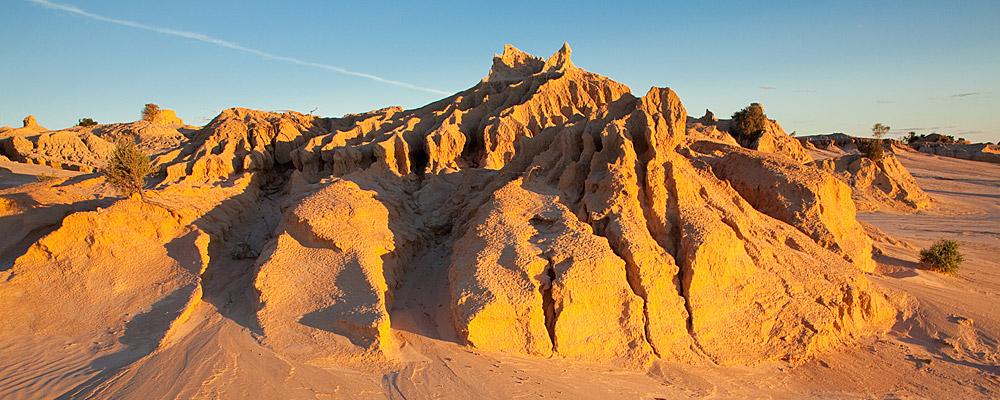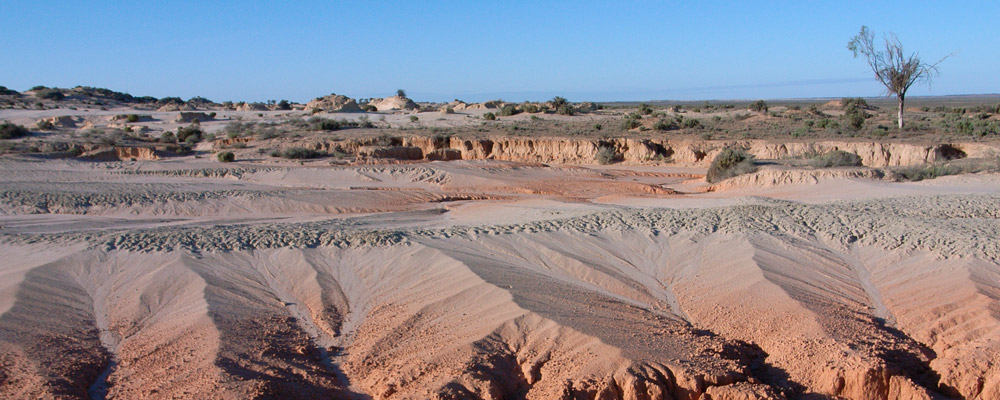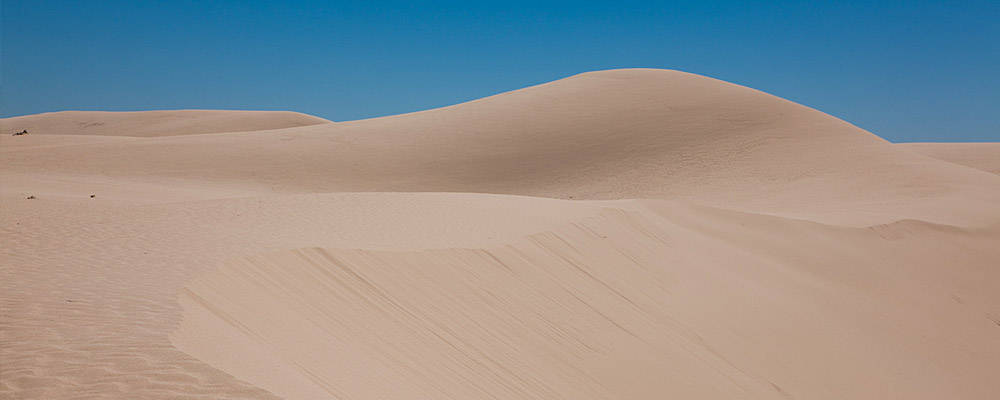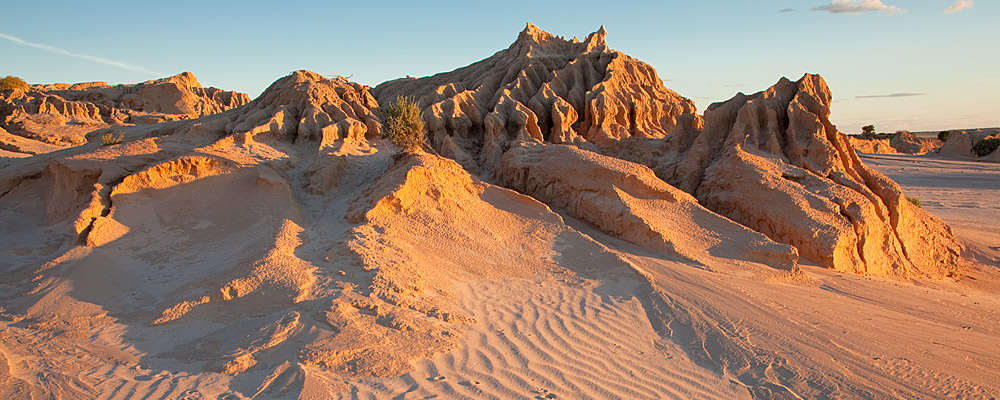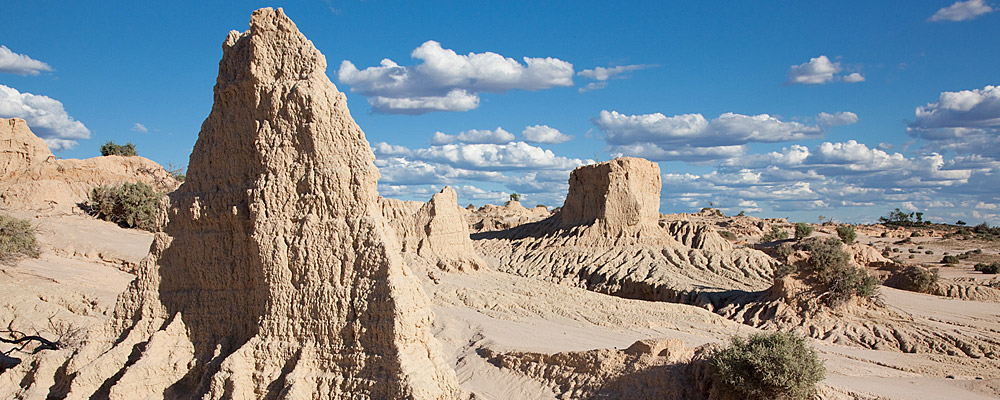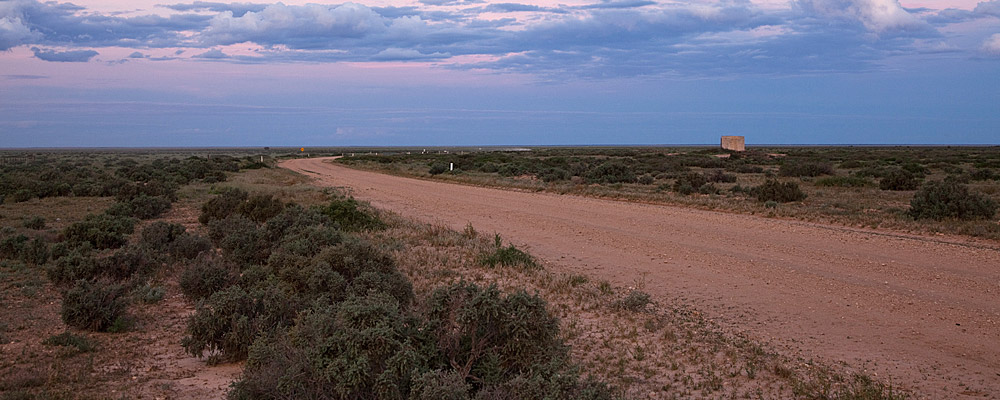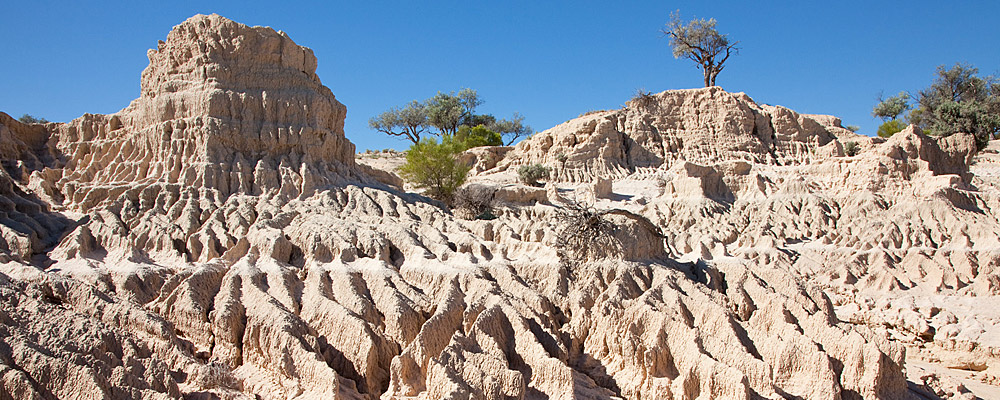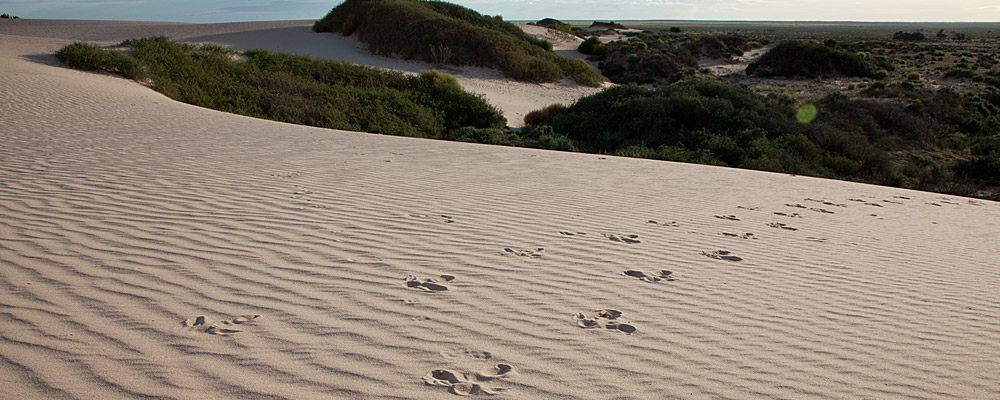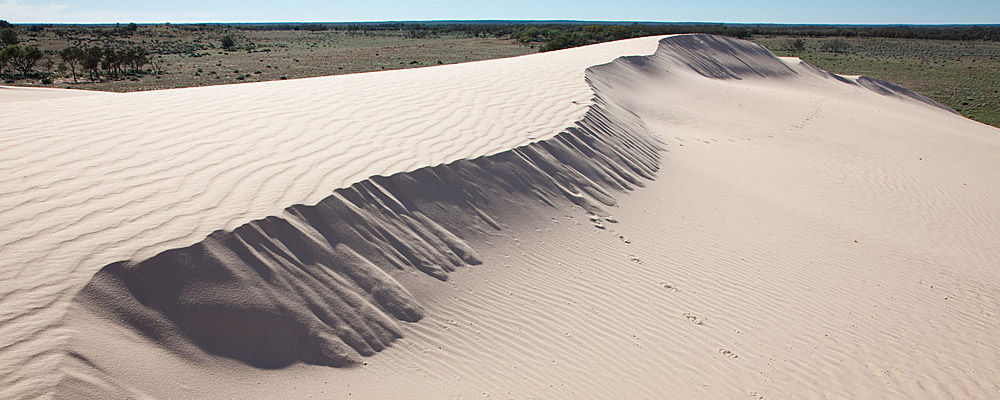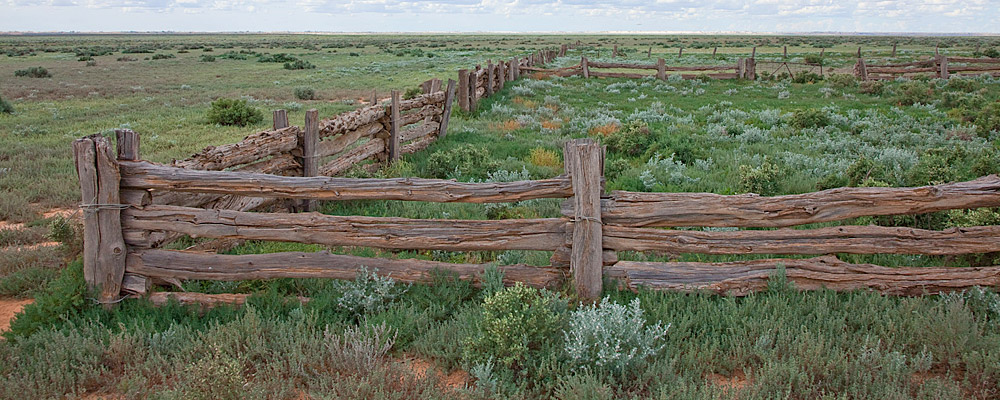Understand Mungo
Ancient Mungo Environments
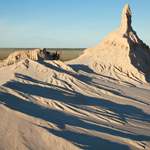

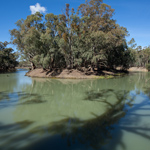
- A Landscape in Action
- A Mungo Timeline
- People in Changing Climates
- Shaping the Land
- Lake Mungo is Different
Why is Mungo so special? How did the Willandra Lakes become one of the most important places in Australia for studying past environments and peoples?
The unique qualities of the Willandra Lakes region are no accident. Australia is an old and relatively stable continent compared with places that have seen 'recent' mountain-building and widespread glaciation. The lakes are on a low-lying riverine plain, near the middle of the much larger Murray Basin. To the east lie the highlands of the Great Dividing Range and to the west are the dunefields (now largely inactive) of the central Australian desert.
The Willandra Lakes area was once inundated by the sea, but the waters withdrew four to five million years ago. No major earth movements have disrupted the area for a very long time, perhaps several million years. No volcanoes have broken through the crust and spilled lava over the landscape. No glaciers have gouged older landforms away. Dunefields did move in from the west, but failed to swamp the lakes.
This long period of relative stability has allowed water and wind to shape the Willandra landscape over the past few million years. Willandra Lakes is a low-lying area that forms what geologists call a depositional environment. It has been such an environment for millions of years. All that time, erosion has been wearing down the distant mountains, washing sediments out in great rivers onto the western plains. The ancestral Willandra Creek carried clay and sand to the old Willandra Lakes and dumped the sediments in the still waters of the lake basins.
These sediments have then been blown by the prevailing westerly winds out of the lakebeds to build up, year by year and layer by layer, the crescent-shaped dunes (lunettes) that lie on the eastern edge of each lake. Lunette-building requires very special circumstances. Groundwater and salt are critical in allowing the fine lakebed sediments to be picked up by the wind and carried onto the lunette.
The progressive build-up of the Mungo lunette has created an archive of information, where human relics have been buried along with other evidence of the past, year by year, in layers like the pages of a book. Such layered sediments which can be studied by scientists accumulate in many different environments, including caves where people have lived for thousands of years. The well known 'seven layers of Troy' are another example. One difference from many archaeological sites is that at Mungo the more recent erosion of the lunette by wind and water means a lot of the past can be seen without having to dig.
The Willandra Lakes are indeed special, and rare too. Only places where the land has been stable enough, for long enough, with the right depositional conditions, coupled with signs of human life, can provide such a wealth of connected information. Around the globe such places are very hard to find.
In this part of the website you can explore the unique features of Lake Mungo and the Willandra Lakes in more detail.
Note: The complex story of Mungo's past has been developed from a great body of research in many fields. Not all the details can be included here. Some aspects are still speculative or debated, and the story continues to be refined and corrected as research continues.
A key reference for the information in Ancient Mungo Environments is "Lake Mungo: window to Australia's past", an educational CD-RoM authored by Dr Jim Bowler (see www.eshowcase.unimelb.edu.au/packages/lake-mungo).
However any errors remain the responsibility of the authors of this website.

